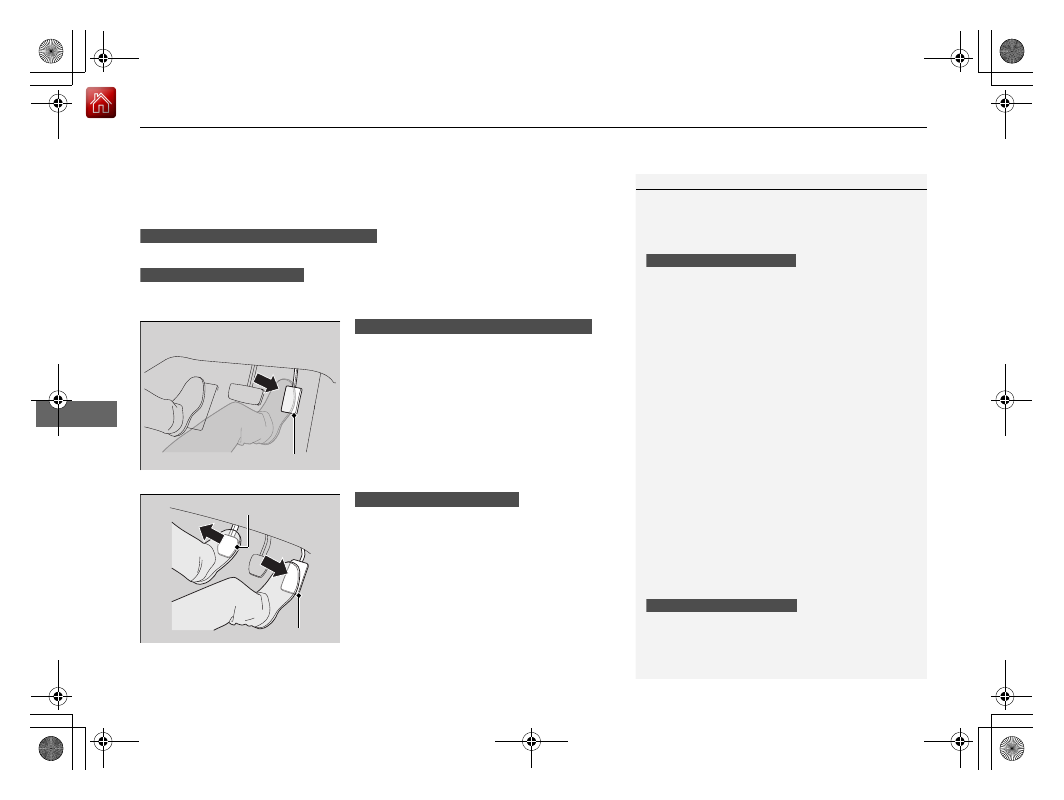Honda Civic Coupe (2019 year). Instruction - part 34

uu
Braking
u
Brake System
528
Driving
■
To release automatically
Use the accelerator pedal to release the parking brake when you are starting the
vehicle facing uphill, or in a traffic jam.
Depressing the accelerator pedal releases the parking brake.
Depress the accelerator pedal while releasing the clutch pedal releases the parking
brake.
Gently depress the accelerator pedal.
When on a hill, it may require more
accelerator input to release.
u
The parking brake and brake system
indicator (red) goes off.
Gently depress the accelerator pedal and
release the clutch pedal.
u
The parking brake and brake system
indicator (red) goes off.
1
•
When the driver’s seat belt is unfastened while your
vehicle is stopped automatically by ACC with LSF.
•
When the engine is turned off while ACC with LSF
is activated.
•
When there is a problem with the electric parking
brake switch, after you turn the ignition switch to
LOCK
(
0
*1
.
If the parking brake cannot be released
automatically, release it manually.
When the vehicle is traveling uphill, the accelerator
pedal may need to be pressed farther to
automatically release the electric parking brake.
The parking brake cannot be released automatically
while the following indicators are on:
•
Malfunction indicator lamp
•
Transmission system indicator
The parking brake may not be released automatically
while the following indicators are on:
•
Parking brake and brake system indicator (red)
•
VSA® system indicator
•
ABS indicator
•
Supplemental restraint system indicator
The clutch pedal must be fully depressed before
gently depressing the accelerator pedal and releasing
the clutch pedal.
Manual transmission models
Manual transmission models
Continuously variable transmission models
Manual transmission models
Accelerator Pedal
Continuously variable transmission models
Accelerator Pedal
Clutch Pedal
Manual transmission models